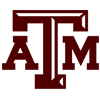Why Cameroon?
The forested highlands in the border region between Cameroon and Nigeria, stretching over to Mt Cameroon, support an impressive small mammal fauna of 97 species, the third highest of the SMSG’s Key Regions. With lots of murid rodents and shrews from the Crocidura genus, it is also home to the highest number of the striking anomalures or scaly-tailed squirrels (Anomaluridae, 6 species) across all the Key Regions.
In terms of threatened species richness, with 22 species Cameroon is second only to Mexico within the SMSG’s Key Regions. It has the highest number of globally threatened shrews with 9 species. It is also home to an impressive 7 AZE-trigger small mammals: the Mt. Oku Hylomyscus (Hylomyscus grandis), Mt. Oku Rat (Lamottemys okuensis) and Mt. Oku Brush-furred Rat (Lophuromys dieterleni) of Mount Oku; Eisentraut's Brush-furred Rat (Lophuromys eisentrauti) of Mount Lefo; Rumpi Mouse Shrew (Myosorex rumpii) from Mount Rata and Rumpi Hills Forest Reserve; and the Mt. Cameroon Forest Shrew (Sylvisorex morio) and Burton’s Vlei Rat (Otomys burtoni) from Mount Cameroon and Mokoko-Onge.
Challenges
Habitat loss and degradation driven by agricultural encroachment, firewood exploitation and over-grazing is the main threat to the small mammals of this region.
With a high human population density in this area and very little forest under formal protection, this threat is severe.
Little knowledge of Cameroon’s small mammal species also hinders conservation planning.
Solutions
The habitat of small mammals within this region flags as being disproportionately under-protected. With the support of a number of conservation NGOs, Cameroon has now established a national protected area network which covers over 10% of the country. This coverage includes recently-designated national parks and the development of a number of community managed reserves in the most important forest and mountain areas.
Since our knowledge of Cameroon’s small mammal fauna is very limited, fieldwork is still desperately needed to understand the ecology of these species. Three Data Deficient species occur in this Key Region.
Future Plans
Cameroon is one of the SMSG Key Regions in which we plan to fill international knowledge gaps and develop a regional initiative to support and coordinate in-country research and conservation efforts to protect this unique assemblage of small mammals.
At present, the SMSG is working to organise knowledge-gathering and network-building workshops in our three highest priority Key Regions, through which we seek to forge links and recruit local members to spearhead our efforts to galvanise research and conservation focussed on each region’s small mammal species. Our work in these regions will be used to perfect our methodology for achieving similar goals in all our Key Regions. Eventually, we hope to nurture collaborative networks of local and international conservation professionals in every Key Region, which are committed to the study and protection of each region’s small mammal diversity.
While the SMSG is not currently active in Cameroon, we plan to turn our attention to this important region as soon as possible. We will continue to monitor the state of this region’s small mammals through the international scientific literature and IUCN Red List.
If you are a professional small mammal ecologist, taxonomist or conservationist working in Cameroon, please do Contact Us to discuss your work and how the SMSG might help.






Hi SMSG,
I appreciate your work.
Recently, I have submitted some proposals targeted at the endangered Praomys obscurus endemic to the Gotel Mountains. I hope my proposals come successful. This will allow me and my team to fill some knowledge gaps on small mammals in the Cameroun Highlands (The Nigerian side). Please I will like to discuss further to explore other funding options and assistance.
Thank you.